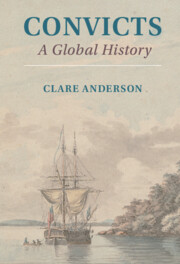Book contents
- Convicts
- Convicts
- Copyright page
- Dedication
- Contents
- Figures
- Maps
- Tables
- Acknowledgements
- 1 Introduction
- Part I
- Part II
- 7 Punishment and Penal Systems
- 8 Encounters, Exploration, and Knowledge
- 9 Medicine, Criminality, and Race
- 10 The Human Sciences
- 11 Escape and Extradition
- 12 Conclusion
- Appendix Principal and Selected Imperial and Latin American Sites of Punitive Relocation
- Bibliography
- Archives
- Index
7 - Punishment and Penal Systems
from Part II
Published online by Cambridge University Press: 06 January 2022
- Convicts
- Convicts
- Copyright page
- Dedication
- Contents
- Figures
- Maps
- Tables
- Acknowledgements
- 1 Introduction
- Part I
- Part II
- 7 Punishment and Penal Systems
- 8 Encounters, Exploration, and Knowledge
- 9 Medicine, Criminality, and Race
- 10 The Human Sciences
- 11 Escape and Extradition
- 12 Conclusion
- Appendix Principal and Selected Imperial and Latin American Sites of Punitive Relocation
- Bibliography
- Archives
- Index
Summary
This chapter explores the circulation and exchange of ideas about punitive mobility during the nineteenth and twentieth centuries. It opens with a discussion of European views on convicts and penal colonies before the 1850s, and then examines the background to the establishment of the International Penitentiary Congress in 1872 and the key concerns of its meetings. It foregrounds the tensions between the penal and economic ambitions of punitive relocation, the global influence of penal innovators such as Alexander Maconochie and Sir Walter Crofton, and the motivations and observations of global penal tours. It suggests that global discussions and tours were instigated by the desire to investigate and compare innovations in punishment, and as part of the long history of connecting convicts to political and territorial ambitions. These included Germany’s wish to expand its empire in Africa and the Pacific in the early 1900s, Russia’s desire to settle the Far East, and Britain’s hope that France would move to abolish transportation in the period between the two world wars.
Keywords
- Type
- Chapter
- Information
- ConvictsA Global History, pp. 219 - 248Publisher: Cambridge University PressPrint publication year: 2022

